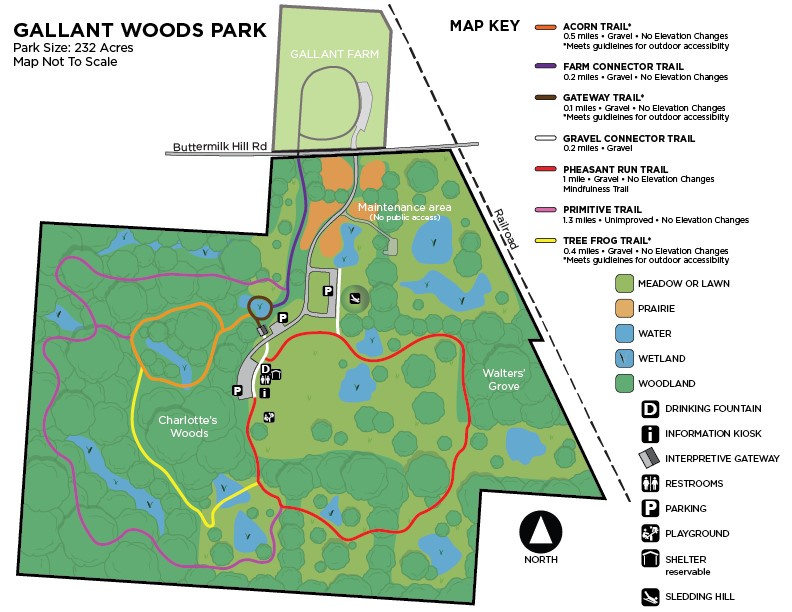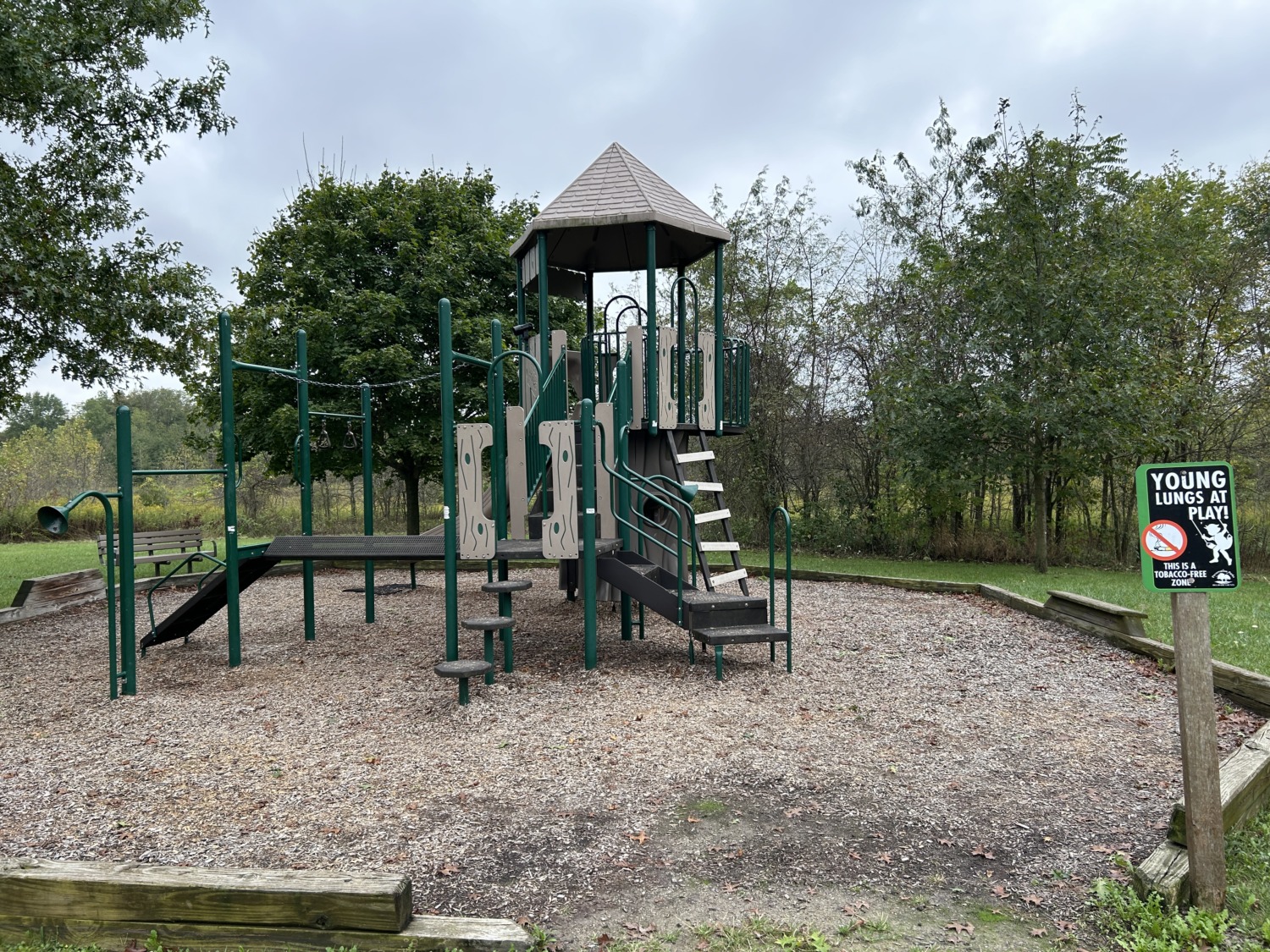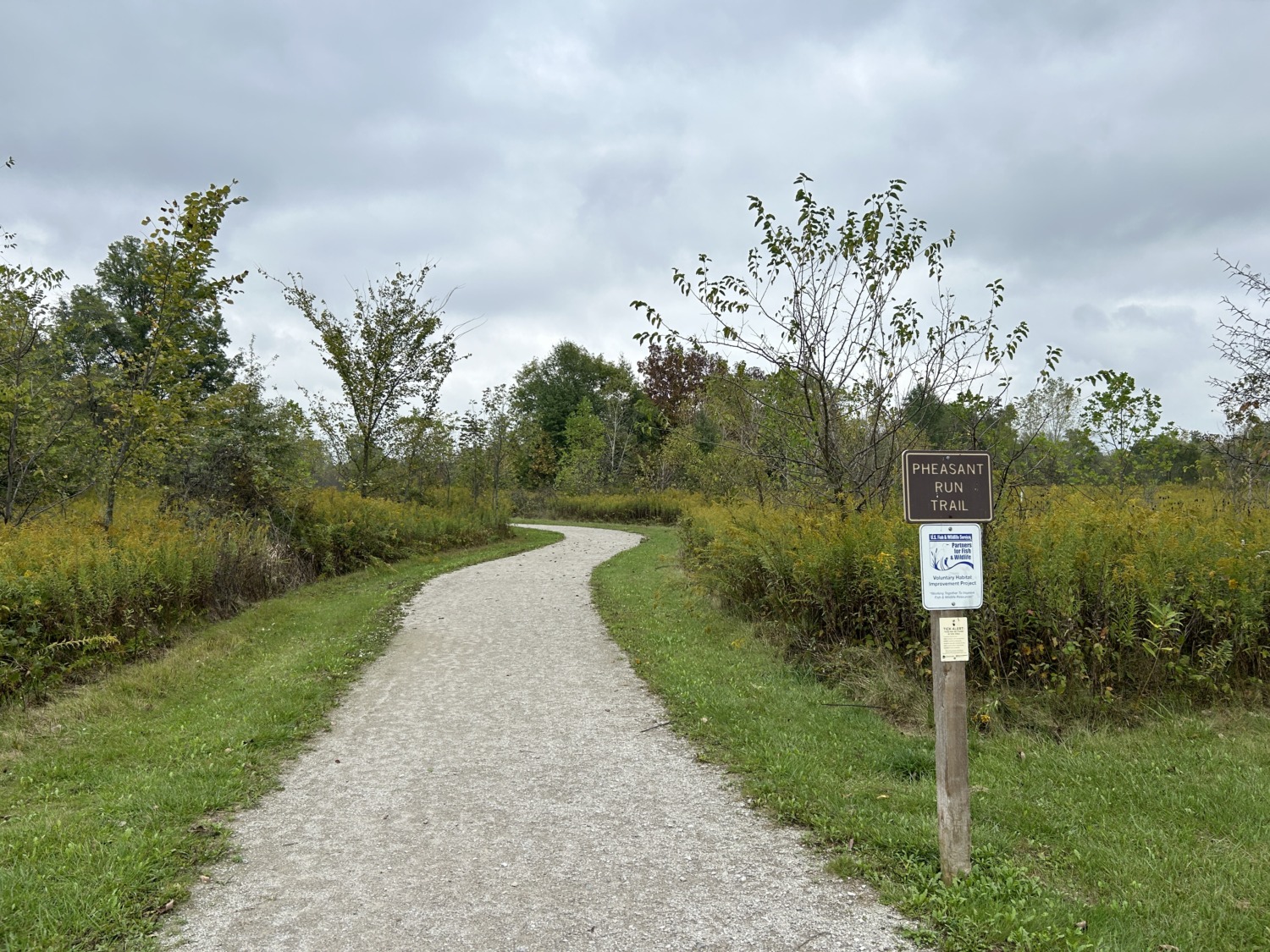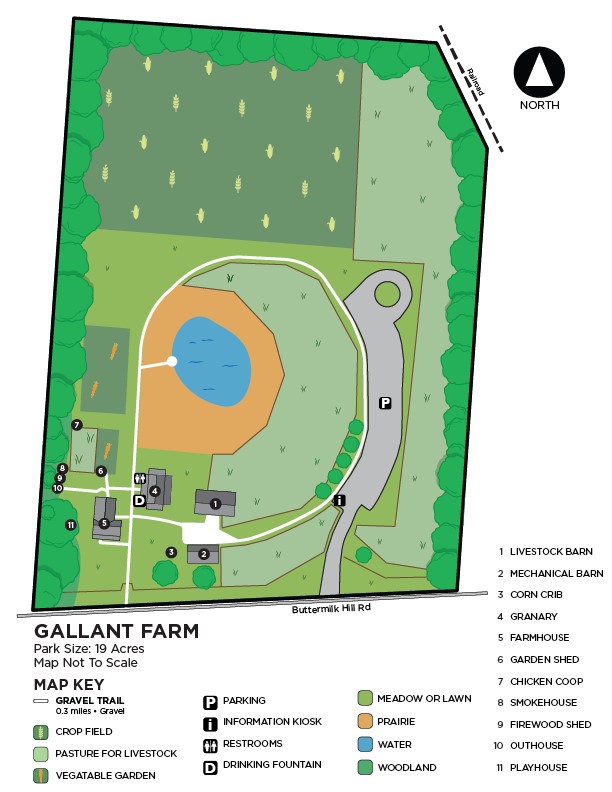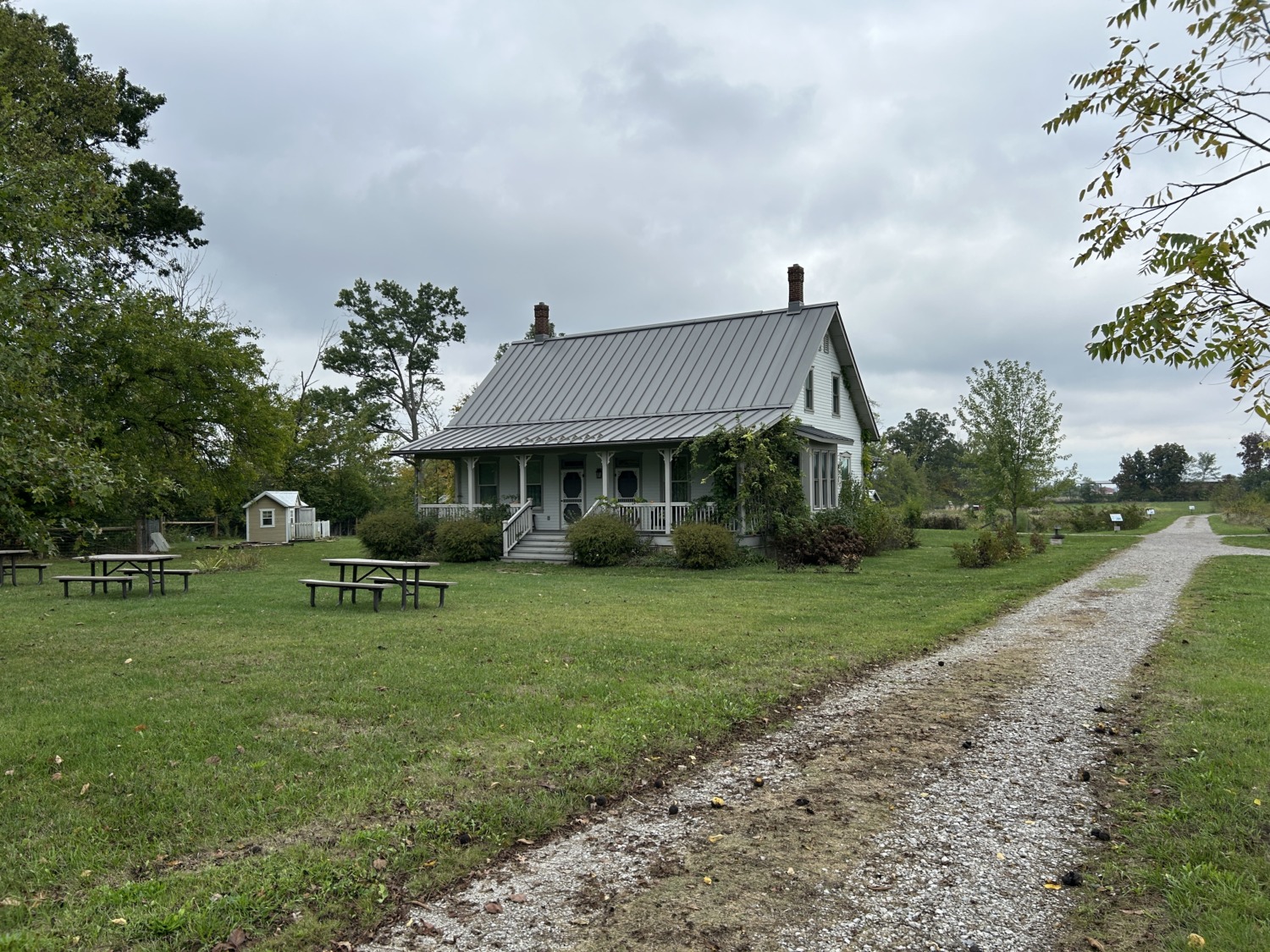The next parks we hiked in our bid to “hike them all” were Gallant Woods and Gallant Farm Preservation Parks. These are two separate parks next to each other north of the city of Delaware.
Gallant Woods Preservation Park features old growth woods, meadows, restored prairies and wetlands, and wetland woods. Several of the wetlands have been restored by Preservation Parks, and these bodies of water attract shorebirds not otherwise seen in the area. The Interpretive Gateway introduces visitors to wetland habitats and describes the transition from farmland to restored native habitat. The park also includes a sledding hill, reservable shelter and playground.
Gallant Woods Preservation Park was acquired because of the generosity of two Delaware County citizens. Charlotte Gallant donated 83 acres of woods to the Park District. An anonymous donor provided the funds to purchase 101 adjoining acres, and the Park District purchased an additional 47 acres of adjoining properties, bringing the total to 231 acres. The park opened to the public in 2005.
Gallant Woods has more than three miles of trails, which makes it the park with the most mileage. The trails are set up in an odd way. There is one loop trail and then two “outer loops” to the west of the larger loop. Tom and I started by hiking the Pheasant Run Trail, the larger loop that winds through meadows and wetland. Then we took the Primitive Trail, which is the furthest out of the loops. This trail wandered through the old growth woods. When we got to the northern terminus of this trail, we made a side trip to Gallant Farm on the Farm Connector Trail.
Gallant Farm is a representation of a Depression-era (1930’s) farm, and includes a farmhouse with period furnishings, a barn with historic 1890s timbers, a granary, machine shed and barnyard, demonstration crop fields, vegetable garden, orchard, and pond. We said hello to the sheep and cows and walked the 0.4 mile trail around the farm. There were waysides along the trail that gave the history of farming in the 1900’s in Ohio.
The website states that visitors will encounter costumed interpreters completing their daily chores — plowing the fields, tending the garden, or cooking on a wood-burning stove – but there wasn’t anyone there the day we visited. “Winter hours” (September through April) are Thursday through Sunday from 12 to 5. Tom said it would be a good place for us to volunteer, but the 1930’s farm has a lot of modern conveniences, like electricity. They definitely need volunteers.
After walking around Gallant Farm, Tom and I returned to Gallant Woods to finish the trails there. We walked back along the Farm Connector Trail, then took the Acorn Trail loop to the Tree Frog Trail. By the time we finished all the trails, I was tired of walking.
But another corner of the county explored. We got to see Gallant Farm, which might be a good volunteer opportunity for us. And the trails were very nice. Six parks done, four to go.

